How to Make a Fashion Magazine Like Vogue (Interactive Guide)
Last updated: November 28, 2025
Fashion magazines have long been the go-to source for the latest style inspiration and trendsetting looks. And while classic titles like Vogue continue to captivate, today’s fashion-forward businesses know that the real power lies in going digital.
For marketing teams, content creators, and small fashion businesses, creating a digital fashion magazine isn’t just a creative project—it’s a powerful marketing tool. Digital magazines help you stand out in a crowded online world, blending sleek editorial design with interactive elements like video interviews, shoppable links, and embedded lookbooks. Vogue itself has mastered this digital evolution, and now you can too.
But if you’re feeling overwhelmed by the idea of recreating that high-end look in a digital format, don’t worry. Designing a digital fashion magazine that captures the magic of Vogue is easier than you think. We’ll guide you step by step, from fashion magazine layout design to digital publishing best practices, so you can bring your brand’s vision to life.
Whether you’re launching a new collection or simply want to captivate your audience with immersive content, this tutorial is for you.
Let’s dive in and show you how to make a Vogue magazine that elevates your brand and engages your audience—no print press required.

Table of contents
- What is a digital fashion magazine?
- How Vogue revolutionized fashion magazines
- How to create a fashion magazine in the digital era
- 1. Come up with a plan for your digital fashion magazine
- 2. Define your editorial vision and content trends
- 3. Choose the right digital publishing platform
- 4. Craft your digital fashion magazine layout and cover
- 5. Enhance fashion magazine with interactive elements
- 6. Curate a cohesive visual identity (typography, photography, color palette)
- 7. Proofread and optimize for digital engagement
- 8. Promote your digital fashion magazine
- How to design a fashion magazine like Vogue with Flipsnack
- Captivate audiences with interactive fashion magazines
- Frequently asked questions about digital fashion magazines
What is a digital fashion magazine?
A digital fashion magazine is an online version of the classic print magazine, designed, published, and distributed on digital platforms. These online fashion magazines are accessible on computers, tablets, and smartphones, making them easier to share and reach broader audiences.
Unlike printed editions, digital fashion magazines bring financial and environmental advantages, while offering dynamic, immersive experiences. Features like videos, interactive spreads, and clickable content transform static pages into engaging brand storytelling.
Interestingly, digital magazines began as “diskzines” in the 1980s, shared via floppy disks with multimedia elements. Today, even iconic titles like Vogue embrace digital publishing, showing that true innovation is just a click away.
How Vogue revolutionized fashion magazines
For Vogue to become the global trendsetter it is today, it needed more than stunning photography and well-dressed models. Founder Arthur Baldwin Turnure knew how to push boundaries and offer readers more than they expected, blending fashion with culture in groundbreaking ways.
Over its 130-year legacy, Vogue has consistently created firsts: from debuting Coco Chanel’s Little Black Dress in 1926, to showcasing Yves Saint Laurent’s iconic Le Smoking Tuxedo in 1967, and even featuring a First Lady on the cover in 1998. These moments turned Vogue into what many call the Fashion Bible, even inspiring pop culture milestones like The Devil Wears Prada. The vogue magazine design and iconic vogue layout have become benchmarks for the entire industry.
As the digital era emerged, Vogue embraced it seamlessly—collaborating with top new brands, leveraging influencers, and blending formats to reach audiences worldwide. Its continued success proves that a fashion magazine can be both a trendsetter and an adaptable digital powerhouse, making it the perfect inspiration for creating your own digital magazine.
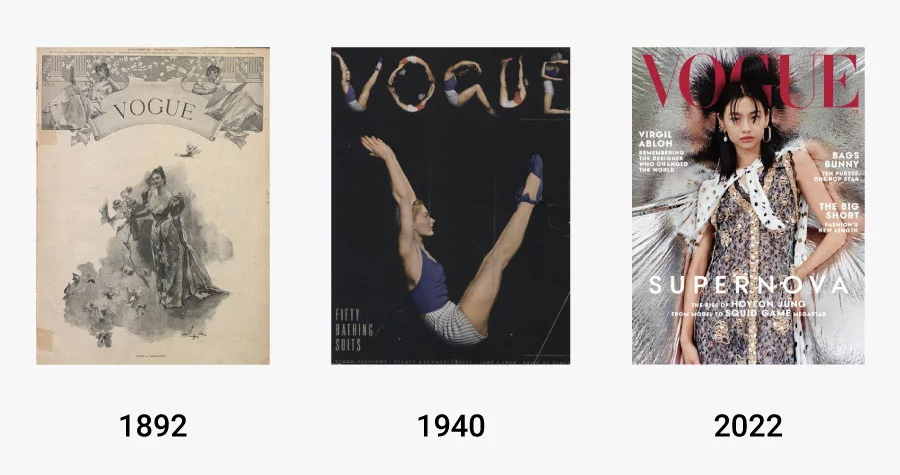
Throughout its 130-year tenure, Vogue collected a series of firsts, showcasing and creating groundbreaking moments:
- In 1926, the magazine debuted Coco Chanel’s Little Black Dress;
- In 1967, the Yves Saint Laurent iconic Le Smoking Tuxedo, designed for women;
- In 1988, they paired haute couture with a pair of jeans;
- In 1998, they featured a First Lady on the cover.
From 1892 to the present day, Vogue grew into an internationally acclaimed magazine commonly referred to as the Fashion Bible. The magazine’s history entered pop culture through the best-selling book and Oscar-nominated movie “The Devil Wears Prada.”
Vogue worked with the biggest brands across the web when the digital age came along. Influencers, celebrities, and social media’s power helped it steadily adapt to the online world. By mixing formats and providing content to subscribers worldwide, Vogue continues to be more than just a fashion magazine.
At the same time, it upholds its reputation as the Number One fashion publication. No wonder we chose it as an example for an article to teach you how to make an interactive magazine.
How to create a fashion magazine in the digital era
We’ve shared some general information about what a fashion magazine is. We also went over Vogue’s role as a trendsetter in cultural growth. We can see how the industry has changed in the digital age. Now we’ll go over how this affects the creation of digital fashion magazines.
Vogue managed this transition into digital format and is one of the most popular publications. So it’s no wonder it’s a success story people want to recreate. That is why you came here. To learn how to make a digital magazine online and explore fashion magazine ideas to make your own vogue magazine.
Up next, you’ll find eight steps you can follow if you’re wondering how to start your own fashion magazine.
1. Come up with a plan for your digital fashion magazine
Before you start designing a fashion magazine, you should look for inspiration in other fashion magazines, online or printed. You can find exciting ideas such as cool type combinations, catchy fashion magazine layouts, or inspiration for a trendy color palette that defines your unique magazine style.
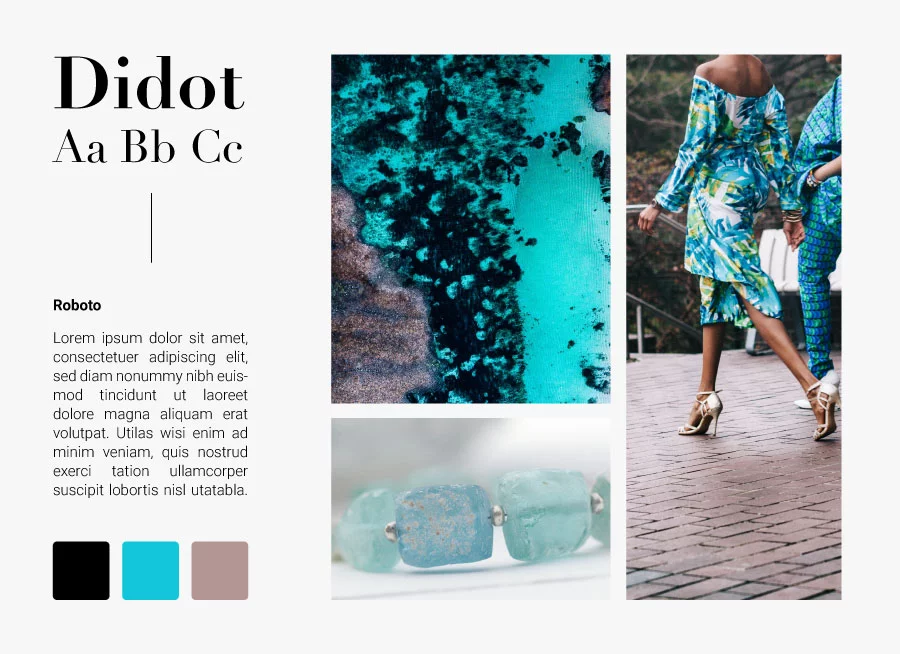
We recommend you use a mood board. This collage consists of images, typefaces, and colors, which will help you define the style of your fashion magazine. This technique will boost creativity, help you stay more organized, find new ideas, and keep the same mood throughout the entire fashion magazine.
Identifying your target audience is the key to a successful fashion magazine. First, ask yourself who reads these magazines and what interests them. The content of your fashion magazine will be dedicated to some types of readers.
Tracking and measuring your readers’ behavior is simplified through extra functionalities. This will enable you to identify popular content, time spent by readers on each page, and interactive elements they engage with. Use this information related to your audience to adapt your buyer persona and content to their needs for future issues. Then, start by establishing a direction for your content.
2. Define your editorial vision and content trends
Before you dive into design, you need a solid editorial foundation. Start by clarifying your magazine’s mission and the unique voice you want to project. Are you focusing on high fashion, streetwear, sustainability, or emerging designers? Pinpoint your niche and core themes.
Next, research the latest industry trends and the topics your target audience cares about most. This ensures your content feels fresh and relevant, while also positioning your brand as a tastemaker. Look at what top fashion publications like Vogue are covering—think trend reports, designer interviews, style guides—and consider how you can put your own unique spin on them.
Finally, sketch out your editorial structure: the type of articles, features, and visuals you’ll include. Will it be an in-depth look at the latest collections, or a more visual showcase of your brand’s style? Build an editorial calendar to stay organized and ensure each issue aligns with your digital brand goals.
3. Choose the right digital publishing platform
With your editorial vision set, the next crucial step is selecting the best digital publishing platform to bring your magazine to life. A powerful, user-friendly platform will make all the difference in creating a polished, interactive publication.
Look for a tool that offers intuitive drag-and-drop design features, customizable templates, and interactive elements like videos, slideshows, and shopping links—these transform your static layouts into dynamic, engaging experiences. Ensure it’s mobile-friendly and optimized for seamless viewing across devices, since most of your audience will browse on smartphones or tablets.
Platforms like Flipsnack (which we’re proud to recommend!) allow you to easily design, publish, and share your magazine online—without needing advanced design or coding skills. They also offer analytics so you can see how your digital issue performs and refine your content for future editions.

4. Craft your digital fashion magazine layout and cover
Your magazine’s layout and cover are your chance to make a powerful first impression. Start by choosing a clean, consistent grid structure that guides readers naturally through your content. A well-organized fashion magazine layout not only looks professional but also ensures your content flows seamlessly from page to page.
When it comes to the fashion magazine cover, think of it as your magazine’s calling card—it should instantly capture attention and reflect the essence of your brand. Use striking imagery, bold typography, and minimal clutter to let your star piece shine. Don’t forget to include a clear, compelling headline and subtle hints at what’s inside to spark curiosity.
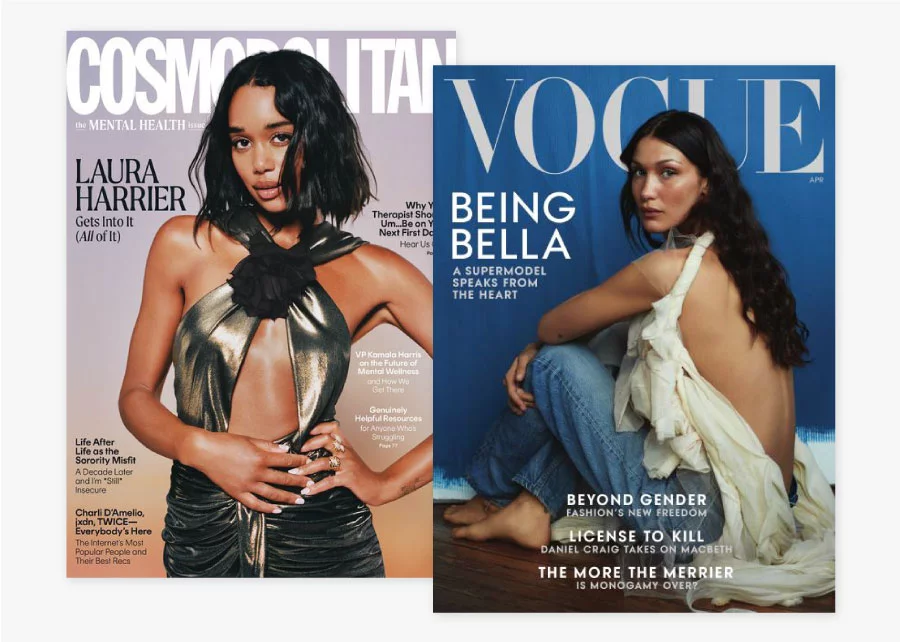
For the inside pages, balance text and visuals to avoid overwhelming your reader. Play with white space to highlight key elements, and keep your design elements consistent to maintain a cohesive look. In the digital space, remember that your layout needs to be responsive—test it across devices to ensure it’s as stunning on a smartphone as it is on a desktop.
5. Enhance fashion magazine with interactive elements
Digital magazines offer an exciting edge over print: interactivity. To captivate and engage your audience, incorporate interactive elements that transform your pages into dynamic experiences.
Add clickable links that lead to shoppable items, embedded videos for behind-the-scenes looks or interviews, and image slideshows to showcase entire collections. Consider adding quizzes, animations, or audio elements for an even richer reading experience. These features transform your magazine into an immersive, digital journey.
Interactive content doesn’t just look impressive—it boosts engagement and shareability, encouraging your readers to spend more time exploring your publication. Plus, it seamlessly integrates with your digital marketing efforts, turning your magazine into a versatile tool for brand growth.
6. Curate a cohesive visual identity (typography, photography, color palette)
A polished digital magazine needs more than just great content—it demands a cohesive visual identity that ties everything together. Start by choosing a consistent color palette that reflects your brand and evokes the desired mood. Whether it’s bold and vibrant or soft and minimalist, let color tell your story.
Typography is equally essential. Select fonts that align with your brand’s voice and use them consistently across headings, subheadings, and body text to create a balanced, professional look. Don’t be afraid to play with font sizes and weights to create visual hierarchy and guide your reader’s eye.

Photography brings your vision to life. For consistent color, skin tones, and on-brand detail across spreads, consider expert magazine photo editing to polish visuals before layout. Invest in high-quality images that spark emotion and support your editorial themes. Whether it’s street style shots, runway images, or studio portraits, ensure each photo complements your color and typography choices, building a unified and instantly recognizable style.
7. Proofread and optimize for digital engagement
Before you hit publish, carefully proofread your magazine to ensure it’s free of typos, grammar errors, or formatting inconsistencies. Flawless copy not only enhances professionalism but also strengthens your brand’s credibility.
Equally important is optimizing your magazine for the digital space. Test it on different devices to ensure it’s responsive and easy to navigate. Embed interactive elements seamlessly, and ensure that videos, links, and other dynamic features load smoothly.
Finally, consider SEO best practices: use descriptive alt text for images, relevant keywords, and engaging titles to help your magazine rank higher in search results and reach a broader audience. By combining meticulous proofreading with digital optimization, you’ll create a publication that captivates readers and drives real engagement.
8. Promote your digital fashion magazine
With your polished, engaging magazine ready to go, it’s time to share it with the world. Leverage your brand’s digital channels—email newsletters, social media platforms, and your website—to get the word out and drive traffic.
Don’t forget to tap into the power of influencer partnerships and collaborations within the fashion industry. Work with fashion bloggers, stylists, or even emerging designers to amplify your magazine’s reach and spark conversations around your brand.
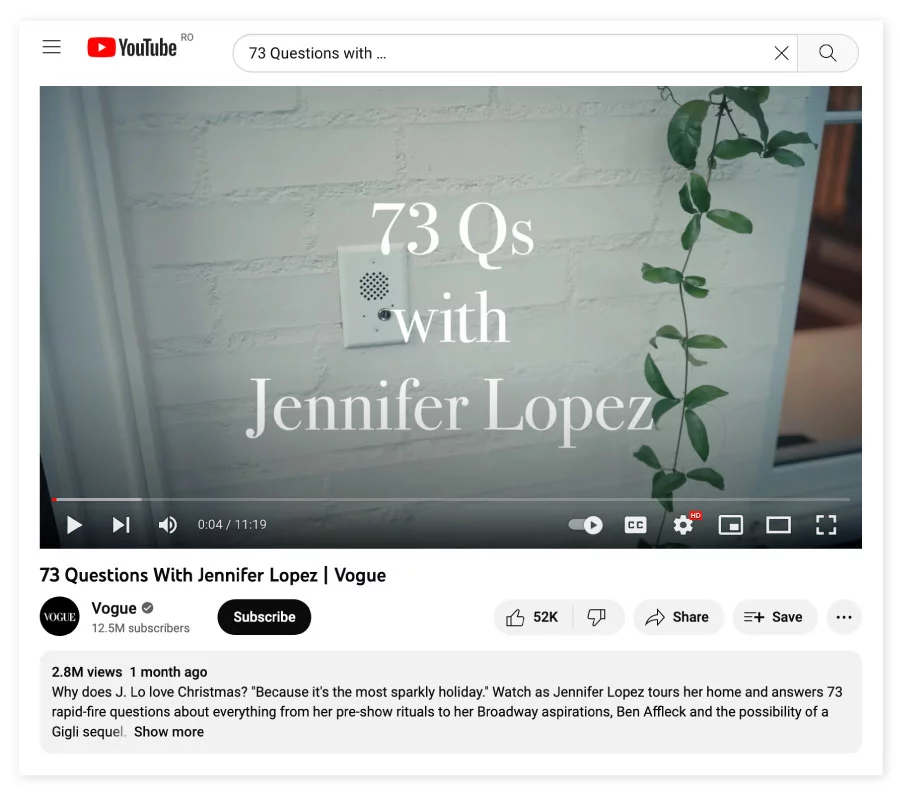
Platforms like YouTube, Instagram, and TikTok can be used as fashion magazines to promote products or the magazine itself. Influencers are curating custom clothing lines and bringing them to the viewers’ fingertips, quite literally. Hence, influencers are integrated into marketing strategies as digital solutions because authenticity and transparency are key elements for consumers.
To effectively measure the impact of these strategies, using the best social media analytics tools can provide valuable insights. These tools help track performance, engagement rates, and audience growth across different platforms, enabling you to optimize your campaigns and focus on what’s working best.
Finally, use analytics tools (like those offered by Flipsnack) to monitor how readers interact with your magazine. See which pages resonate most, track click-throughs, and adjust your future content and distribution strategies to keep your audience engaged and coming back for more.
How to design a fashion magazine like Vogue with Flipsnack
Creating a digital fashion magazine demands careful planning and a clear editorial vision, but once you’ve nailed down those steps, it’s time to bring everything to life. This is where your hard work pays off, transforming your ideas and content into a stunning digital experience.
Switching from print to digital publishing can feel daunting, but it also unlocks a world of benefits. Production and distribution costs drop dramatically, interactive features take your publication to the next level, and you can reach readers across the globe—all with the polish of a high-end fashion magazine. Flipsnack makes this transition smooth and intuitive, offering everything you need to design professional, engaging digital magazines.
With Flipsnack’s easy-to-use tools and customizable templates, you can bring your fashion magazine to life in just a few simple steps.
Let’s explore how to harness these features to create a digital magazine that’s as captivating and elegant as Vogue—without the hefty print costs.
How to create a fashion magazine with PDF upload
Since some magazines are made in InDesign, here’s a tutorial on how to make a fashion magazine starting from an existing PDF.
1. Upload PDF
If you already have a magazine in PDF format, you can upload it to Flipsnack. Once uploaded, you can transform it into an immersive reading experience for your viewers. You can even upload several PDFs simultaneously if you’ve been proactive with your fashion magazine content.
2. Add interactive elements
One of the best things about Flipsnack is that it’s the gift that keeps on giving. Anything can become interactive with imagination, creativity, and the features available. Gone are the days of static PDFs that spark little interest in readers. With Flipsnack, you can add:
- captions
- videos
- GIFs
- slideshows
- music
- pop-ups
- tags
3. Make it accessible and share it with the world
Before sharing your digital magazine with the right audience, you must ensure it’s accessible to all users, including those with disabilities. With our AI accessibility solution you can automatically generate alt text summaries for each page of the flipbook to enable the screen readers to identify the content. Readers will then be able to navigate through each element using their keyboard and successfully understand the information included.
Once your digital fashion magazine is published, distribution is as simple as sharing a single link. Post it across your social media channels, embed it on your website, or include it in your monthly newsletter—no complicated publishing workflows or multiple file formats required.
How to create a fashion magazine with free templates
1. Choose a template and brand it
Are you without a PDF-format magazine? No worries. Pick a fashion magazine template from our library and customize it with your brand and design ideas. You can change anything to fit what you imagined and create a brand kit to ensure consistency throughout your magazine’s future issues.
2. Customize the content and make it interactive
Now it’s time you drag & drop your own content because Flipsnack is that easy to use. Replace the visuals with your own and update any written content that will hook your readers in. Interactive elemets will give them an immersive experience that the printed version will never be able to.
3. Share it with your selected audience
From start to finish, Flipsnack takes care of all the stages of publication and even further in distribution. You can easily share or embed your digital fashion magazine through links or via email to a list of subscribers.
Captivate audiences with interactive fashion magazines
Creating a fashion magazine is a journey—a journey that blends creativity, editorial vision, and meticulous design to craft a publication that doesn’t just inform, but inspires and delights. With Flipsnack, this process becomes even more rewarding. Every element you choose, from typography and color to imagery and interactive features, shapes an experience that’s more than just a read—it’s an adventure your audience will want to relive again and again.

As you follow the steps we’ve outlined, you’ll see how seamlessly interactive elements—videos, clickable links, immersive galleries—transform your magazine from static to dynamic. It’s these features that truly hook your readers, sparking deeper connections and making them eager for your next issue.
At the end of the day, a fashion magazine isn’t just about trends or headlines—it’s about storytelling that resonates. So embrace the creative process, experiment with interactivity, and let your digital magazine become a window into your brand’s unique world. When you pair that creativity with the power of Flipsnack, you’re not just keeping up with the industry—you’re leading the conversation.
Frequently asked questions about digital fashion magazines
Yes, and here are a few monetization strategies: Distribute your digital magazine through platforms like Magzter and Zinio, which offer reader subscriptions and pay-per-issue options; Sell directly on your website using WooCommerce or specialized platforms like Subsail; List on Shopify to sell individual copies and subscriptions with integrated ecommerce features.
The cost of a digital fashion magazine truly depends on the budget you want to spend. From developing to launching a digital fashion magazine, costs can add up fast, but you could also do it independently.
While a full editorial team incurs significant expenses, you can work with freelancers on Upwork or Fiverr, guest writers, and photographers who exchange content for publicity.
Launching a website to promote your fashion magazine through WordPress starts around $100-200 for the first year (including domain and hosting). Self-hosted options like Hostinger offer hosting plans starting at $1.95-$2.99/month with a free domain for the first year, while WordPress.com managed plans start at $4/month.
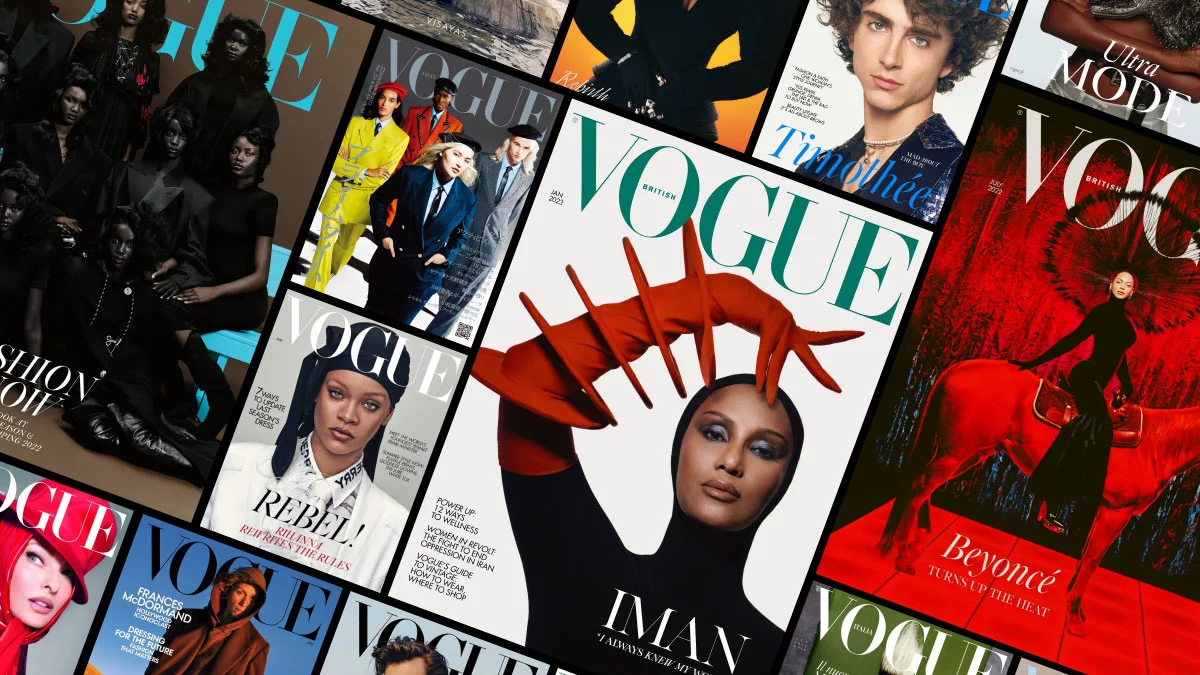
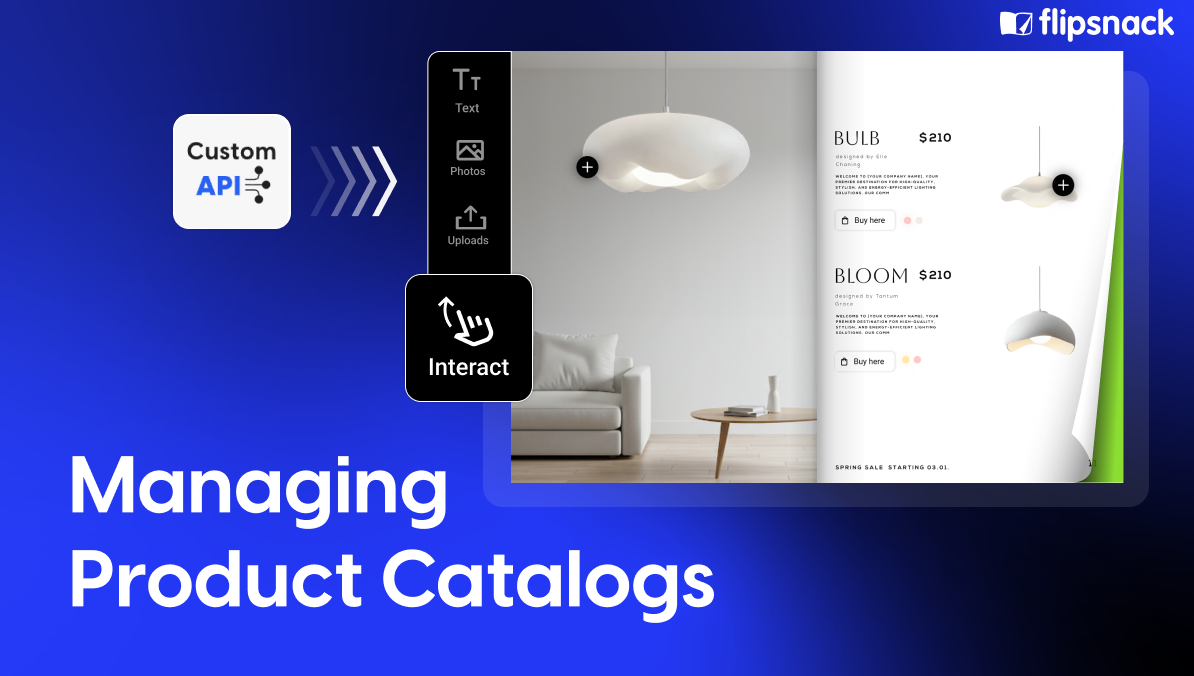
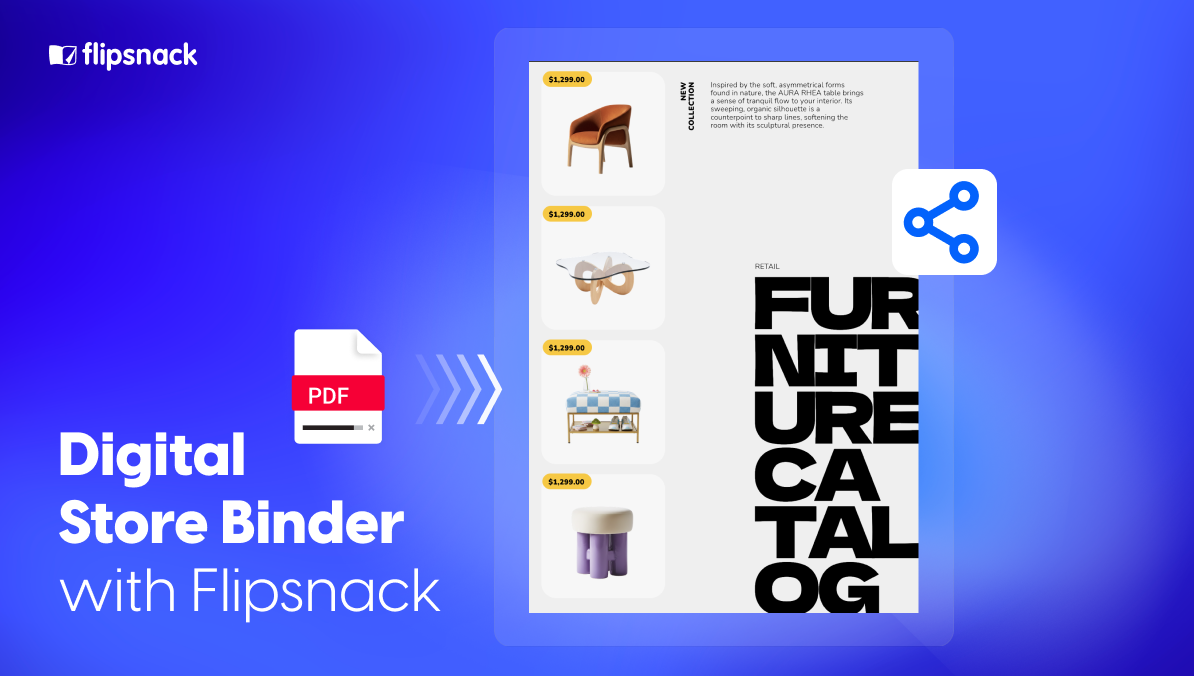

Hi Jani,
Thank you so much for this post, it is exactly what I was looking for. Very insightful for some like me who is looking to start a Magazine in Lagos Nigeria. I was wondering If you would be open to a few questions. Maybe we can chat via email?
Hi Rini and thank you!
Sure, you can email me at jani [at] flipsnack.com
Thanks for the guide and post.
Very helpful just what i needed , i am re-branding my fashion magazine in Ghana/ Nigeria.
Hi Jani,
Nice post, I like this post very much. I love to read your post, Some points like “The cover of the fashion magazine” and “color palette” are awesome.
Thanks for sharing.
Thanks for the tips.soon am going to make mine because am so interested in this
It’s interesting that you talked about choosing a font based on the audience that reads it. I want to work for a magazine company in the future. It would be smart to gear what I write towards a target audience because it would keep people engaged.
Great tips for designing a magazine. Thanks for all this. I highly appreciate your efforts
Good Informative content about Open Magazine like Fashion. Every thing Detailed with steps. Magazine cover Picture, Cover lines is more Important and a part of starting ang making a successful magazine & Vogue. Nice…
In your “Check Twice” paragrah ought “because you’re used with the content” be “because you’re use to the content”?
Otherwise absolutely the best straight forward post I have seen in this topic. Thank you for sharing.
You’re right Rondi, thank you for your comment! I will correct it right away!
I love these guide.. for design magazine lovers these great guide very helpful. Just thanks for given opportunity to read this.
I love reading through a post that can make people think. Also, thank you for permitting me to comment!
hey there!!
Exactly what i was looking for.
thank u for this.
it is super helpful, these small videos of flip snack .
Nice